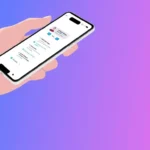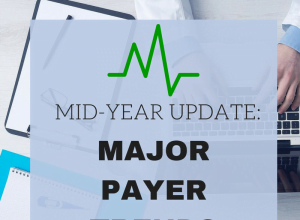

EXCLUSIVE POST – Roberto Ascione is a physician and marketing specialist from Italy. He founded his first company, Healthware in 1996. This company was acquired by Publicis Group in 2007 and aligned under PHCG (Publicis HealthCare Communication Group) as the largest health-oriented agency network in the world. I have the honor of talking today with Roberto about the future of mHealth in the EU.
Q. Roberto, mHealth was one of the reasons you launched Publicis Healthware International (http://www.publicishealthware.com). Your company now has incredible breadth of experience in digital projects. So, please tell us, with health-related APPs growing exponentially but subject to incredibly fast obsolescence and tough selection from the users, is mHealth already mature?
A. Given what is happening in mHealth in general, and the dizzying number of apps and services growing in this space, we expect it to mature to a point where the market will naturally gravitate towards the best and most useful apps and services, and eventually crystallize them into a true and specialized communications category. Although the potential of mHealth has been around for a number of years, its promise has become more alluring and more practical with each advance made in hardware, operating systems and third party software, but this field did not reach its full potential until last year. What happened last year is that interoperability between devices and services has moved to the forefront to become the game changer in this area, and as interoperability matures so will its ability to provide the greatest impact in terms of value and usefulness to the various apps and services being developed in parallel.
space, we expect it to mature to a point where the market will naturally gravitate towards the best and most useful apps and services, and eventually crystallize them into a true and specialized communications category. Although the potential of mHealth has been around for a number of years, its promise has become more alluring and more practical with each advance made in hardware, operating systems and third party software, but this field did not reach its full potential until last year. What happened last year is that interoperability between devices and services has moved to the forefront to become the game changer in this area, and as interoperability matures so will its ability to provide the greatest impact in terms of value and usefulness to the various apps and services being developed in parallel.
 Many apps are downloaded and rarely used beyond the first few times because of barriers to their acceptance by end users. Because of this, the mHealth field can be seen as going through a “natural selection” process where the same users (physicians and patients) are putting the apps and services being released through their paces. The apps that end up best fitting within a person’s natural workflow, or “lifeflow” and integrate seamlessly into their day-to-day behavioral routine are definitely the ones that have the greater chance of wide adoption, and are the ones that stand the best opportunity of eventually defining the de-facto standards in mHealth
Many apps are downloaded and rarely used beyond the first few times because of barriers to their acceptance by end users. Because of this, the mHealth field can be seen as going through a “natural selection” process where the same users (physicians and patients) are putting the apps and services being released through their paces. The apps that end up best fitting within a person’s natural workflow, or “lifeflow” and integrate seamlessly into their day-to-day behavioral routine are definitely the ones that have the greater chance of wide adoption, and are the ones that stand the best opportunity of eventually defining the de-facto standards in mHealth
Q. But you see the trend leading to “suites of apps” as the next stage of development, it seems?
A. Yes, the other thing that this natural selection process is doing is to generate exponential growth in mHealth into the coming year, when we will see single-purpose apps being integrated into a suite of apps designed to work together to deliver improved health outcomes. This growth will be seen across the entire healthcare spectrum from sales to compliance and adherence. Some of these changes will be seen for Pharma Reps, as they will continue to use mobile detailing apps, but this time adapted for customized patient education tools (thus introducing a value added proposition to the engagement with physicians). EMR/EHR platforms will be further leveraged and accessible by being integrated into Point of Care decision support apps. In addition, the ability of new devices’ native capabilities to be leveraged for improving patient monitoring, as well as patient-physician communications in between visits, will create the right mix for the creation of compliance and adherence apps. Once all of these elements are put into a single context, we are not far from envisioning a scenario where the mHealth suite becomes a communication tool to deliver education, track data, help make decisions, and ultimately it will work its way into becoming an integral component of the overall care process.
Q. Given your global perspective at Publicis Healthware, what distinguishes Europe in the world of Mobile Health?
A. A couple of things, in my opinion. First of all something that is true for digital health in general which is to say being Europe not one Country both in terms of language as well as in terms of healthcare systems and health consumption behaviours the scenario is more fragmented than other areas. This translates in less critical mass available to allow solutions to scale up as efficiently as elsewhere such as in US. The second issue – somehow related – is the availability of large accessible data sets. Having data sets, coding, taxonomies, etc. truly accessible and able to be leveraged by mHealth applications is key to deploy several solutions substantially and I see gaps here too.
Q. We’ll be seeing you at Doctors 2.0 & You Paris. Why would you recommend that our members (readers?) attend this conference?
A. Mainly because the all m/e Health is a ‘cross discipline’ environment where you might see a computer scientist discussing with a communication expert and a physician sharing a common language, all challenging the same issue and Doctors 2.0 & You successfully represents a gathering of all those concerned in a formula which fosters dialogue and productive discussions.
Please go to the Mobile Health Around the Globe page to read more posts in this great ongoing series.
And if you have a story to tell about Mobile Health Around the Globe, please email me at joan@socialmediatoday.com








